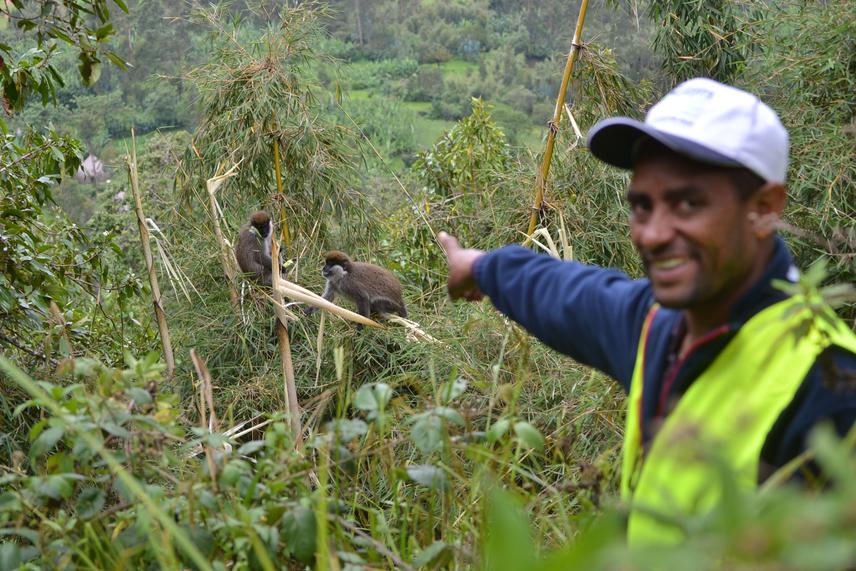Addisu Mekonnen
Other projects
28 May 2012
Distribution Pattern, Population Estimate and Habitat Suitability Map of the Bale Monkey (Chlorocebus djamdjamensis) in Southern Ethiopia
The aims of this project are to assess the current status, distribution, and threats of montane bamboo and its importance for the local livelihood, Bale monkeys and climate change.

PI observing Bale monkeys.
African montane or highland bamboo (Arundinaria alpina) is a tropical high altitude bamboo endemic to Africa and indigenous to Ethiopia. The montane forests in southern Ethiopia contain significant populations of bamboo that harbor animals of global conservation concern including several endangered, endemic and flagship mammals. Unlike other species, however, the little-known, endemic and endangered Bale monkeys (Chlorocebus djamdjamensis) primarily occupy bamboo forest habitats and prefer to feed primarily on bamboo young leaves. Currently Bale monkeys are highly threatened with extirpation because of habitat loss and fragmentation specifically due to the destruction of bamboo for agricultural and grazing land expansion as a result of the ever increasing human population in Ethiopia. Furthermore, local people use bamboo for local consumption and commercial purposes that would remain the main threat of Bale monkeys’ that entirely depend both for food and shelter. Thus, the conservation of bamboo and Bale monkeys are highly interdependent. However, no detailed studies have been carried out on its current status, distribution, threats and sustainable harvest of bamboo, its significance for local people, climate change mitigation and as a home for Bale monkeys. Thus, this study will help to fill these gaps.
Once the current status and threats of bamboo are determined, management plan will be developed for sustainable harvest and afforestation of bamboo. Bamboo is one of the fastest growing forest resources that can be sustainably harvested annually and can adapt to grow on marginal and degraded mountainous lands not suitable for traditional agriculture. These traits make bamboo an exceptional renewable economic resource and a very good candidate for the development of the green economy in Ethiopia by providing benefits as home for Bale monkeys and other wildlife, and poverty eradication for the livelihood of the local people through sustainable harvest of bamboo. Afforestation and restoration of bamboo will also help to combat climate change through sequestration of more carbon dioxide from the atmosphere and create carbon trade opportunities from developed countries. In addition, the conservation of bamboo and Bale monkeys will also help to generate income from tourism that will help the local community and the whole country. In sum, the result of this project will help inform the design of a conservation management plan offering a “win-win” scenario for the coexistence of bamboo, local people and Bale monkeys.